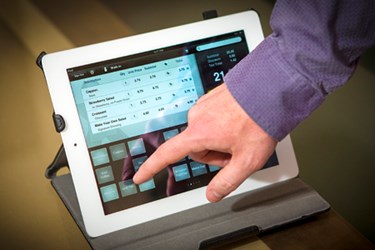Retail IT News For VARs – November 11, 2013

By Anna Rose Welch, Editorial & Community Director, Advancing RNA

In this week’s news, data tagging audits could help your retail customers measure omni-channel engagement and predictions continue for a slow holiday shopping season.
Are Your Retail Customers Measuring Omni-Channel Engagement?
Performics provides a list of long-term and short-term omni-channel strategies for retailers to optimize omni-channel engagement pre- and post-holiday season. While most retailers use the “last click” measurement model, Performics suggests building assist data into attribution models. This will help a retailer keep the opportunities open to keywords/channels/devices that influence eventual conversions. A tagging audit can help determine if all capabilities are in place to comprehend data from every point of a customer’s shopping process. Another important development for retailers is mastering mobile, as Performics says, 38 percent of total paid search clicks come from smartphones and tablets.
ScanSource Urges VARs To “Own The Entire Retail Space”
In Business Solutions’ coverage of the 2013 ScanSource Partner Conference, Tony Sorrentino of ScanSource Security shared how the as-a-Service business model is helping VARs to provide security systems to SMBs and to provide adjacent technologies. Greg Dixon, CTO of ScanSource, also urged VARs to look at offering technologies beyond traditional POS solutions to “own the entire retail space.”
Social Media Advertising Has ROI
Adobe has released its Social Intelligence Report analyzing the costs per click (CPC), click-through rates (CTR), cost per thousands (CPM) and ROI for various social media. The report found that Facebook’s CPC is down 40 percent from last year, while CTR increased 275 percent, making Facebook an important brand marketing tool. Revenue per visitor (RPV) has also increased for first and last click attribution models for Facebook (39 percent), Twitter (300 percent), and Pinterest (150 percent). While Facebook still holds the record number of visitors, it’s down 20 percent from 2012. Pinterest and Twitter both show increases in number of visitors, making these social sites more valuable ways to target consumers. Geo-targeted posts have also become more frequent, producing slightly higher engagement rates than posts without geo-targeting. The report also reviews the opportunities that exist in light of the report findings.
Morgan Stanley Predicts Bleak Holiday Sales
The Los Angeles Times reports that researchers at Morgan Stanley are predicting the worst Thanksgiving-Christmas sales since 2008. The recent government shutdown and the fact that the shopping period is six days shorter than it was last year are some of the factors influencing sales this year. While consumer spending is increasing because of lower gas prices, a stock market upswing, and higher real-estate values, most Americans are choosing to purchase big-ticket items instead of gifts. Morgan Stanley is predicting a 1.7 percent increase in same store sales during the fourth quarter, less than half of last year’s 3.5 percent expansion. Morgan Stanley predicts online retailers could take 13 percent of holiday sales this year, up from 11 percent last year.
Retail IT Talking Points
According to Eric Krell for Direct Marketing News, many marketing experts are saying the marketing industry must become more data driven and more omni-channel. According to experts at Adometry’s XCMO Summit 2013: Cross-Channel Marketing Optimization Conference, most marketing functions manage and measure channels individually.
According to a new survey conducted by Synqera, promotions are key to consumer purchases, with 90 percent of Americans surveyed claiming to repeatedly buy products on promotion. 85 percent of consumers say they would return to a particular retailer should they be alerted to upcoming sales of previously purchased items. However, impulse purchases are an important part of the shopping experience; in fact, half of respondents describe themselves as impulsive shoppers.
The Smithsonian National Museum of American History recently catalogued a Check-A-Tron Electronic Cash Register. Check-A-Tron sold cash registers from 1975-1983. This register was donated by J. and Richard Hayman.
